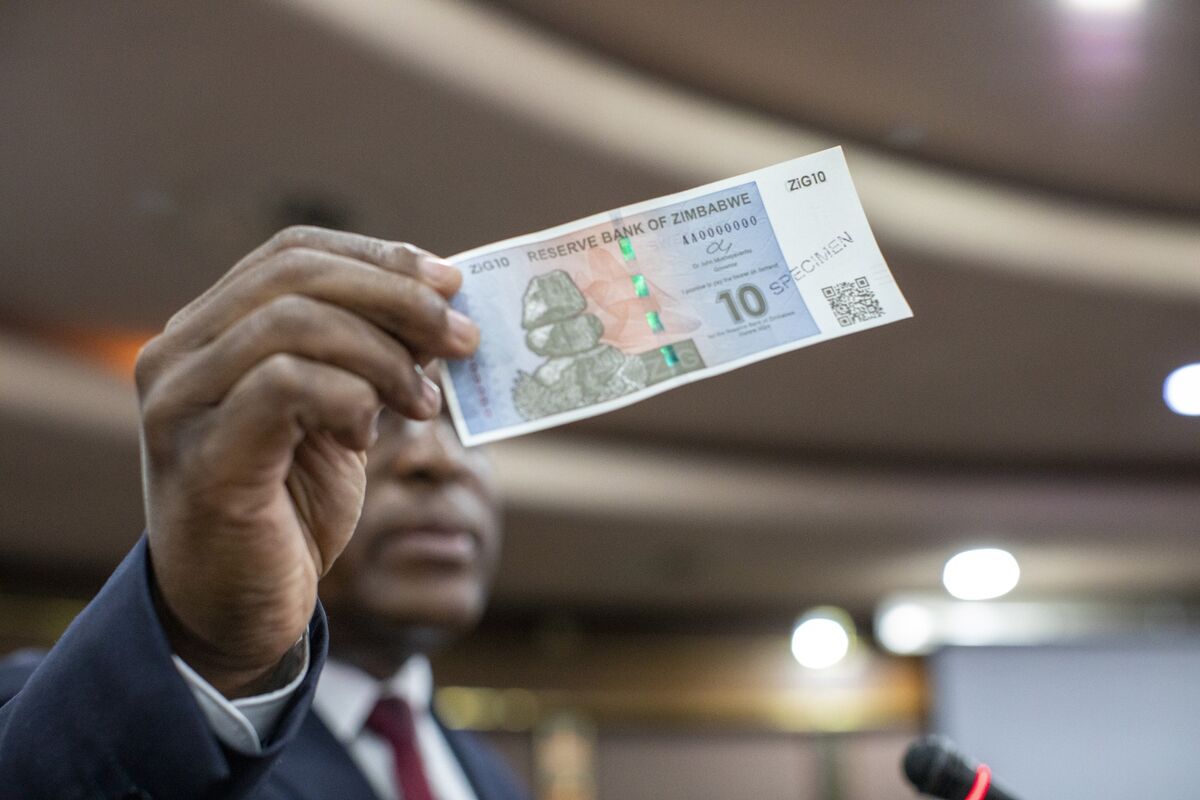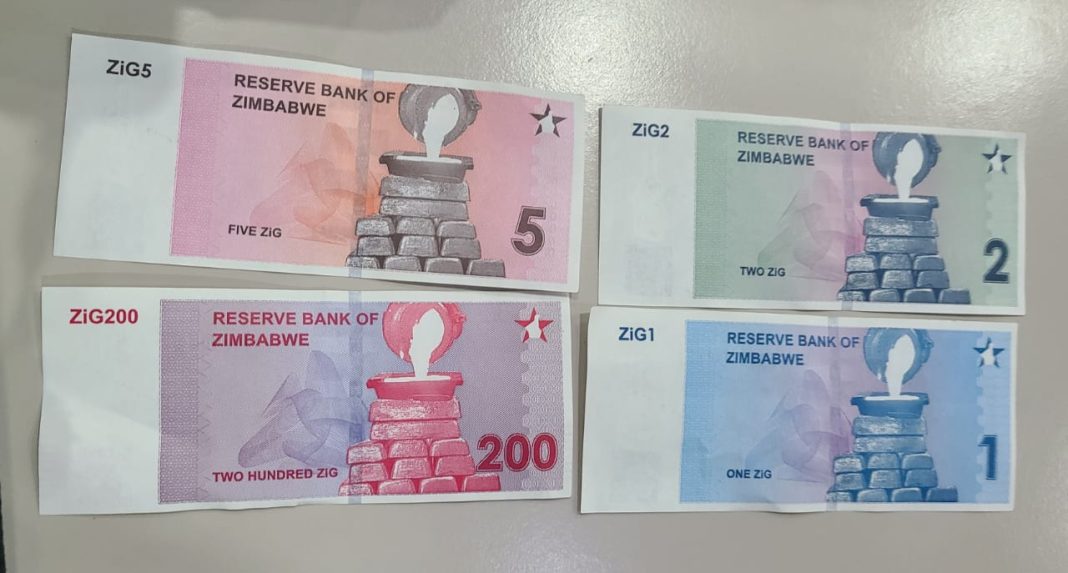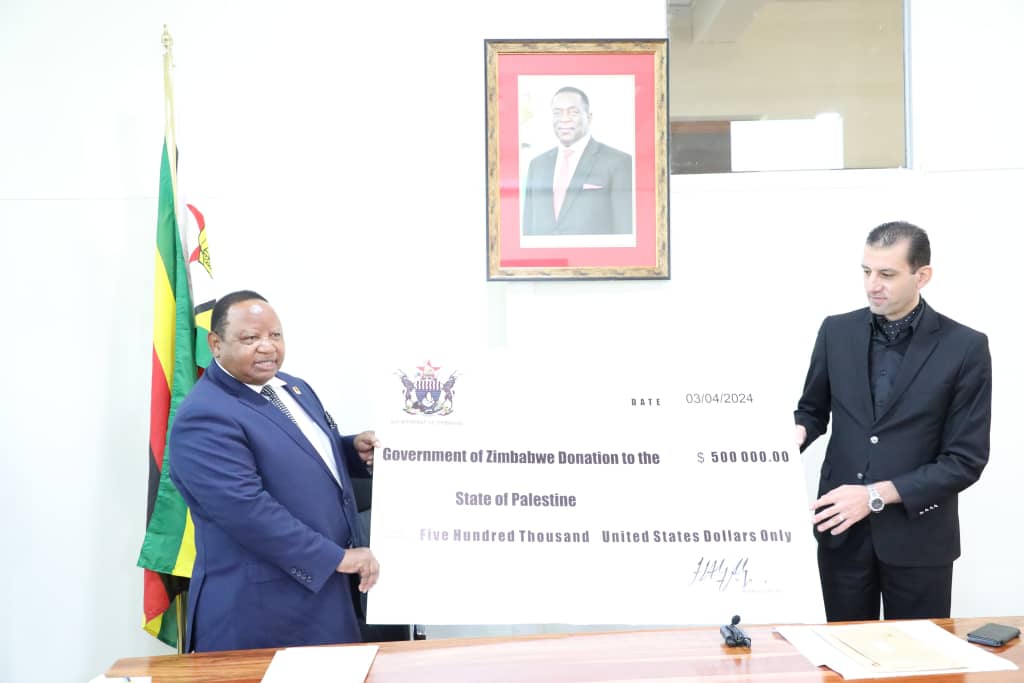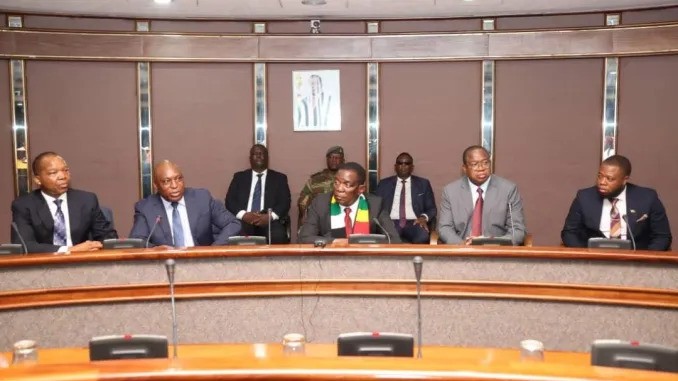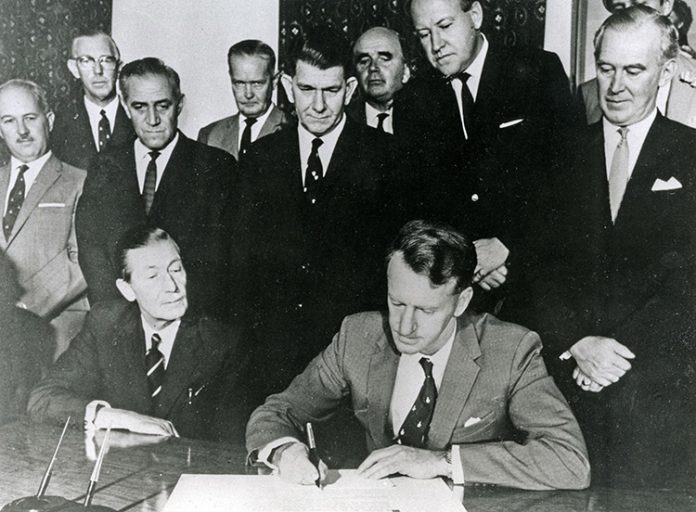
Money and the winds of change in the 1960s. Federal collapse, the Rhodesian rebellion, sanctions UN sanctions and the turn towards a post-sterling currency.
Tinashe Nyamunda
The 1960s have been viewed by historians as the decade of African independence. While many African countries began attaining political independence from the late 1950s onwards, other countries only celebrated majority rule in the 1990s. But as these countries emerged from territorial colonial rule, their leaders were fully aware of the economic ties and dependencies which lingered on in the form of neo-colonialism.
In the sphere of currency, nations of Anglophone Africa origins established central banks and new post-sterling currencies. This was unlike in Francophone Africa where countries attained independence on the basis of an awkwardly phrased “Colonial Pact”. Under this arrangement, up to fourteen West African countries retained the Communauté financière d’Afrique or Financial Community of Africa (CFA) currency area which was controlled by France. While our focus is on Southern Rhodesia, a former British colony, it is important for comparative purposes to get a sense of post-colonial monetary arrangements elsewhere on the continent.
Until as recent as 2020, the Colonial Pact upon which African countries attained their independence retained a colonial currency system in which they deposited some 65 percent of the foreign exchange in an operations account at the French Treasury. Thereafter, they had access to only 15 percent of this money, borrowing against the rest on interest whenever they needed the money for any development in a given fiscal year. Moreover, in terms of infrastructural and other supplies and developments, France retained the right of first refusal before any other countries were given contracts. In British Africa, the neo-colonial ties were subtler. Neo-colonialism proceeded to some degree in the form of commonwealth relations and the retention of economic ties. But many African countries established their own currencies and created their own central banks at the attainment of independence in the hope of establishing financial and economic independence.
In the previous article, I examined how the United Nations (UN) and the multilateral financial organs of the International Monetary Fund (IMF) and World Bank were instrumental in laying the foundations for a post-colonial but neo-liberal monetary framework in the post-Second World War period. Much of this took shape in the 1960s as African countries attained their political independence and many of their currencies operated on the basis of the Bretton Woods system, pegging their money against the US dollar. On top of this, they had to adopt an economic management framework based on a System of National Accounting (SNA) which was worked out by Richard Stone and colleagues for the UN. All of this ensured that the world was reconfigured to suit the neo-liberal international financial system regime in which the USA has substantial influence. In this context, especially after 1957, Britain began retreating from colonial territory and granted most of its African colonies political independence in the 1960s, except one country: Rhodesia.
In the last article, I also examined the establishment of the Federation of Rhodesia and Nyasaland and the resistance against it by African nationalist movements. Created in the hope of the retention of white rule and pursuit of dominion status, African resistance demonstrated that it would not survive. Recognising this, Southern Rhodesia’s Prime Minister (elected into office in 1953 when Godfrey Huggins became Federal Prime Minister) was beginning to accept the inevitability of eventual white rule, but viewed as too moderate by a fearful white electorate. He was pushed out when he attempted to expand the African franchise from 2 to 16 percent by lowering property qualification required for one to vote.
He was ultimately replaced as the United Rhodesia Party leader and as Prime Minister by Edgar Whitehead in 1958. But Whitehead realised what Todd had seen and proceeded to try and expand the African franchise, relax racially discriminatory laws and negotiate the 1961 constitution, which would have been more liberal than white nationalists were prepared to accept and make way for the eventual attainment of majority rule. But some of the conservative whites in his party, led by Ian Smith, broke away and formed their own party, the Rhodesian Front in 1962 to fight for the retention of white rule. The Rhodesian Front, led by Winston Field and Deputised by Smith ran against the United Rhodesian Party in December 1962 and won the elections. Field then replaced Whitehead as Prime Minister.
The following year in 1963, the federation collapsed and with it, all Federal assets such as the Reserve Bank among others were liquidated. With federal collapse, Northern Rhodesia attained independence as Zambia and Nyasaland as Malawi in 1964. Having won the elections, the Rhodesian Front government demanded independence from Britain on the basis of minority rather majority rule. This created an impasse over the future of Southern Rhodesia which led to a crisis that would have significant implications of monetary developments as discussed in what follows.
As Zambia and Malawi attained independence, they established territorial central banks and national currencies. But in doing so, they had a period in which the British assisted. The emerging nations became independent members of the UN and became part of the British Commonwealth. Because of the retention of these relations, the former colonies also gained access to preferential commonwealth trade and aid. Zambia, for instance, was assisted in purchasing copper mining rights from the British South Africa Company which had held them until 1964.
In comparison, however, Southern Rhodesia was locked in fruitless negotiations for majority rule. Given the global shift towards liberalism, Britain had abandoned the idea of a white ruled British central Africa and wanted to be seen in the Commonwealth to be supporting African interests for majority rule. The white population of Rhodesia, in part scared of losing their property and wealth to the threat of nationalisation, opted to defend minority rule. In their company was apartheid South Africa and an imperial Portugal that wanted to retain its colonies as long as it could.
Pressure had mounted from independent African countries that had just joined the UN. They were called the Committee of 24 independent African countries. Among other African countries whose independence they campaigned for; the committee put pressure on Britain to grant majority rule to Africans. In the Commonwealth, African countries were applying pressure to invade Rhodesia so as to force the white government to concede to majority rule. However, to avoid this, Britain insisted that Rhodesia was its legal and imperial responsibility and it would manage the situation through negotiations. London put its efforts in avoiding any invasion of Rhodesia by other African countries and dismissed the idea of using its own troops to avoid, so to speak, ‘killing kith and kin’. Alternatively, it opted to apply diplomatic and other pressure.
Fearing a rebellion from white ruled Southern Rhodesia, London began to impose financial measures against Salisbury. These measures were anchored on Rhodesian currency connections with sterling. Between 1890 and 1965, Southern Rhodesia’s currency was either sterling or fully backed by it. So, in the minds of British policy makers, suddenly cutting the link or expelling Rhodesia from the sterling area would be devastating as the colony would have to float its currency without the backing of a stronger anchor currency. This operation was codenamed blacksmith. Other accompanying measures would involve removing Southern Rhodesia from commonwealth trade preferences; putting an embargo on the purchase of the colony’s biggest export, tobacco; putting an embargo on the importation of oil to grind its industries to a halt, among other measures.
Southern Rhodesia was not unaware of the possibility British sanctions against it. In preparing for their rebellion, it created alliances for the defence of white rule with Lisbon and Pretoria. This became known as the Pretoria-Salisbury-Lisbon Axis. In the event of any expulsion from sterling, Rhodesia could depend on the support of its allies to sustain a post-sterling currency by exporting through these countries and retaining as much foreign exchange as it could. Without the sterling cover, it could hedge its currency value against its foreign exchange holdings. The allies would allow Salisbury to also diversify its markets and export through them as well. To achieve the control and management of a local currency, the Reserve Bank of Rhodesia was created in 1964 and exchange control regulations were put in place in the same year also.
All the negotiations about Southern Rhodesia’s independence broke down and The Rhodesia Front party decided on 11 November 1965 to unilaterally declare the colony’s independence from Britain. The Unilateral Declaration of Independence (UDI) was quickly declared illegal and London started applying operation blacksmith. In 1966, it convinced the UN to declare what had become Rhodesia, a threat to global peace and security, and therefore UN sanctions were imposed on the recalcitrant colony. The British government was so confident that its measures against Rhodesia, particularly the expulsion from sterling would work that they suggested that Salisbury’s economy would collapse in matter of weeks rather than months. But because of the measures applied by Rhodesia, the colony survived and even prospered for at least a decade before sanctions began to bite.
But how did Rhodesia manage to survive for so long despite the impression that it would collapse once sterling backing had been removed and economic sanctions applied? This brings us to a crucial change in currency history that would change the country’s economic trajectory from sterling linkages towards different regimes, starting with those based on UDI management. Because Rhodesia (as it became known after UDI by dropping the prefix ‘southern’) would not become part of the UN because of sanctions, or benefit from IMF and world bank loans or British aid, it designed a system to manage outside of this framework. This is a crucial point because all the countries that had gained independence and joined these international organisations soon descended into financial and economic crisis less than a decade after independence in a context where South Africa and Rhodesia prospered.
It would be easy to conclude that the colonies’ white populations benefited from racially discriminatory policies and that they benefited from available markets for their products. Settler economies had been developed on the back of the exploitation of ultra-cheap labour and the exploitation of extractive industries and ultimately diversified. But one factor that has not been fully considered was how in the 1970s, the geopolitics of Southern Africa allowed the white ruled colonies to re-imagine a regional based economic arrangement based on mutual interests and granting each other access to certain friendly international markets in Europe through Portugal or manipulating markets by selling to countries such as the USSR which was locked in an ideological conflict with the West.
Certainly, Rhodesia benefited, for instance from selling chrome to the Russians even though it was embargoed by countries such as the USA. In any case, many countries flouted these sanctions and continued to trade with some of these colonies. On top of this, Rhodesia put measures in place to curb Zambian interests in supporting the nationalist movements of the region by reducing access to Kariba electricity and access to oil from Mozambique via rail and road that passed through Rhodesia, among other measures. This is partially what informed the construction of the Tanzam railway going via Tanzania for instance. In the interim, Zambia, with British assistance, only accessed oil through expensive airlifts.
At the heart of its economic success aspect was how Rhodesia managed its monetary system and economy. The Rhodesian economy was managed through an inter-Ministerial Economic Coordination Committee (MECC) established in 1964. This was headed by the Minister of Finance, John James Wrathal and involved all line ministries. Interestingly, the Reserve Bank of Rhodesia headed by Bruce Noel was never involved in any policy matters. This is in stark contrast to the ways in which the Reserve Bank of Zimbabwe is so closely involved in matters of the economy. But the MECC coordinated how the fiscus was to be managed and all the dollar saving strategies that the government needed to pursue.
There was a close connection between the MECC’s work and that of the geopolitical interests of the region. In fact, the 1964 Trade Agreement between Rhodesia and Portugal as well as with South Africa, had much input from the MECC. Even the ways in which the budget was worked out involved a lot of coordination in decision making and determining how the economy was run. INDEED, THE CHIEF WEAPON FOR RHODESIAN LOCAL ECONOMIC MANAGEMENT WAS COORDINATION AND CLOSE INTER-MINISTERIAL COOPERATION! This is a feature very different from what you see in today’s economic management where the finance portfolio is the be it and end all of economic policy making when in fact, no ministry can be fully effective without cooperation and coordination.
The Rhodesian rebellion proceeded in the hope that their UDI would result in a ‘fiat accompli’, that is other countries would simply accept their white ruled nation. Ultimately, African nationalists mobilised themselves and starting in 1964 onwards, they began mounting resistance although most historical narratives problematically point to 1966 as the beginning of the liberation struggle. But despite the impact of UN sanctions and liberation, the Rhodesian economy successfully established a post-sterling monetary system free of British controls and a formidable well-coordinated economy developed upon a foundation of geopolitical alliances that benefited the interests of the countries that wanted to retain white rule.
What is crucial to note is that after 1965, the currency connections with Britain were severed. But instead of adopting SNA based management frameworks as other independent countries that joined the UN did, sanctions against Rhodesia meant that it was excluded. For this reason, Rhodesia established its own economic management framework based on its MECC-based system and anchored on the Pretoria – Salisbury – Lisbon axis to sustain white rule in the region. Even as imperial-colonial links were cut at UDI, the demands of adopting neo-liberal type frameworks was forestalled. As a result, Rhodesia was forced to consider home grown solutions based on both close internal planning and beneficial external relations.
Even if this was done in the interests of suppressing majority rule, the lesson to be learnt from the Rhodesian experience is that even little known peripheral countries that follow the right strategies and implement the most appropriate policies for their context can defy super powers and international ostracism, sanctions and war to establish a growing, diversified economy. Perhaps today’s post-colonial regime can pick a page from the Rhodesian book instead of hiding behind sanctions to mask their failures, some of which are induced by grand corruption!
Rhodesian development proceeded even as Britain began facing its own financial challenges. In fact, London devalued its sterling currency in 1967 when Rhodesia held out. Moreover, after these challenges with sterling became clear, Salisbury began considering completely severing any last remaining links, including moving towards decimalisation, that is moving away from using pounds, shillings and pence towards using dollars and cents. Ultimately, the British colony began taking a different trajectory than what it had pursued prior to its UDI and had significantly diversified its markets and economy. Even if the country utilised numerous agents for sanctions-busting agents to ensure that their products were marketed and sold outside Zimbabwe. By 1970, Rhodesia experienced the best economic growth during the decade of 1960 to 1970 which is the highest in the country’s history despite sanctions and war.
So this Rhodesian UDI experience can be illustrative for the Zimbabwean government. The colonial economy prospered under very stringent circumstances. What the Rhodesians recognised was that their fate was dependent on the strategies and plans that they made and thus they utilised the MECC. They also made alliances based on mutual geopolitical interests with South Africa and Portugal. This occurred in a context where many other African countries thought they saw an opportunity in UN membership and multilateral economic advice to develop their economies, resulting instead in the collapse of their economies. As we will see in the next article examining the 1970s, the Zambian and Malawian economies collapsed despite aid and multilateral aid and loans and Rhodesia fared better despite the trying global economic climate of the 1970s, tightening sanctions and intensifying war. The biggest take away for me being that the economic fate of any economy lies with its policy makers, not external loans, aid or investments as today’s government seems to think and hide behind sanctions when they continue to fail.


